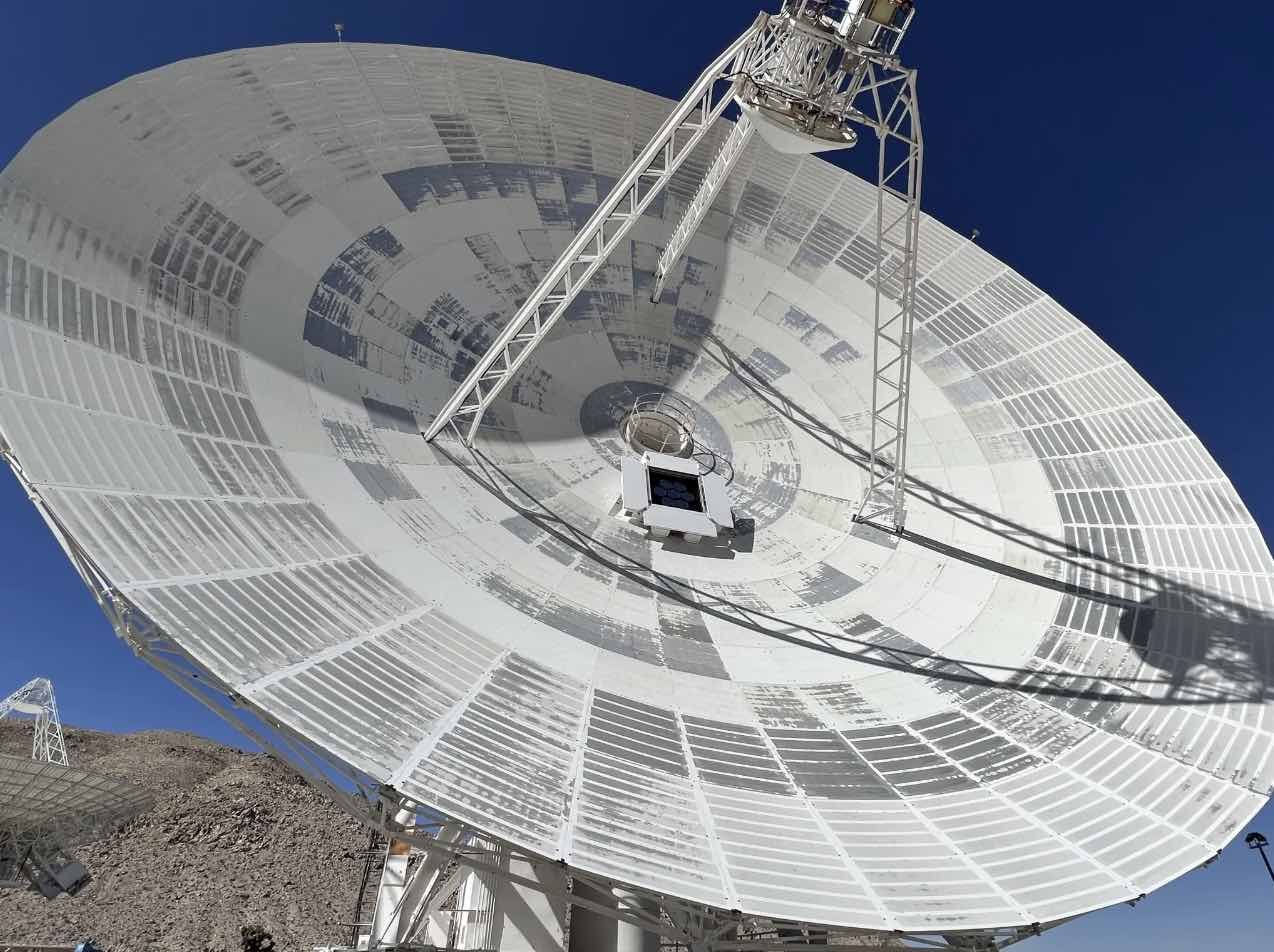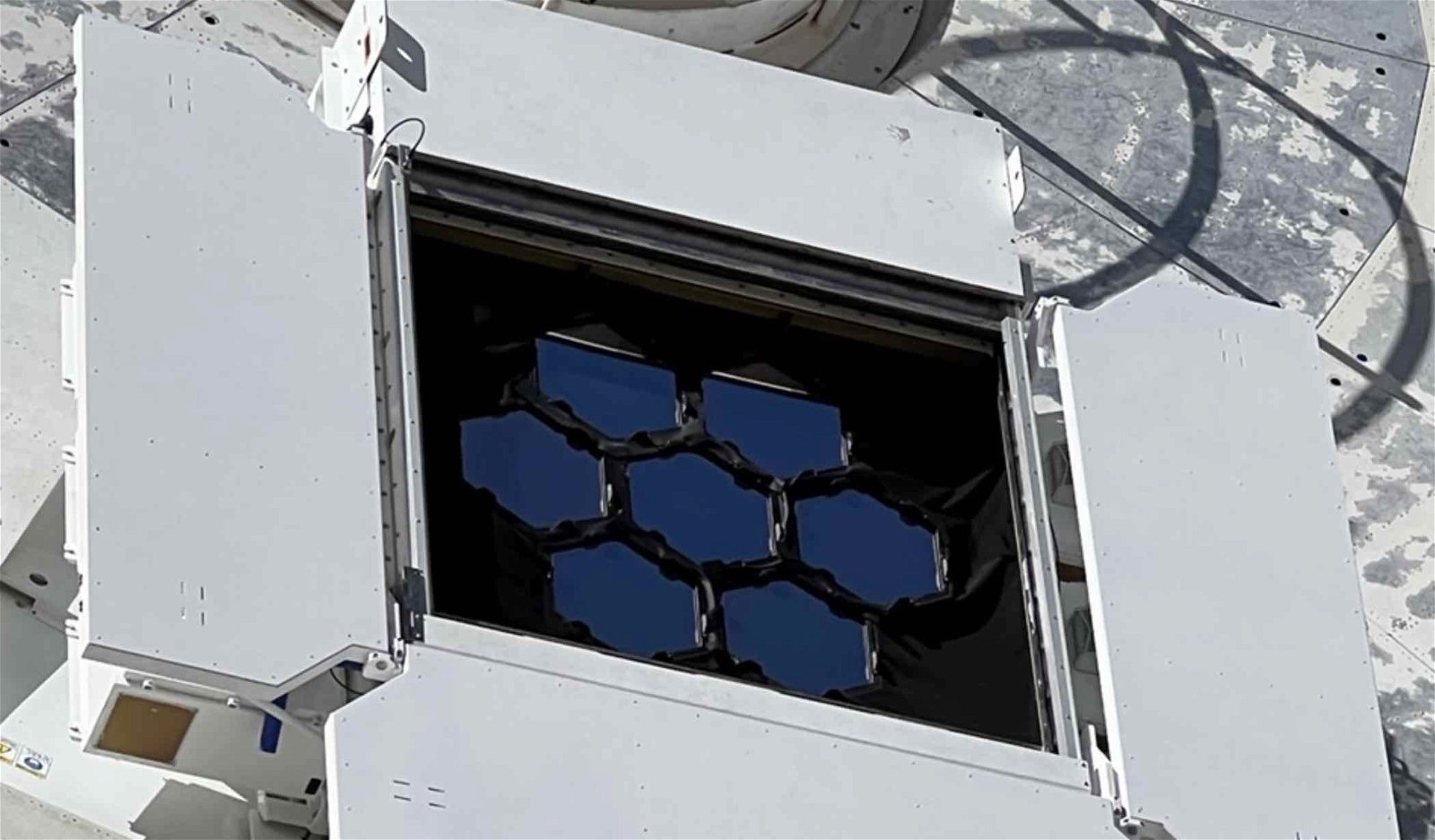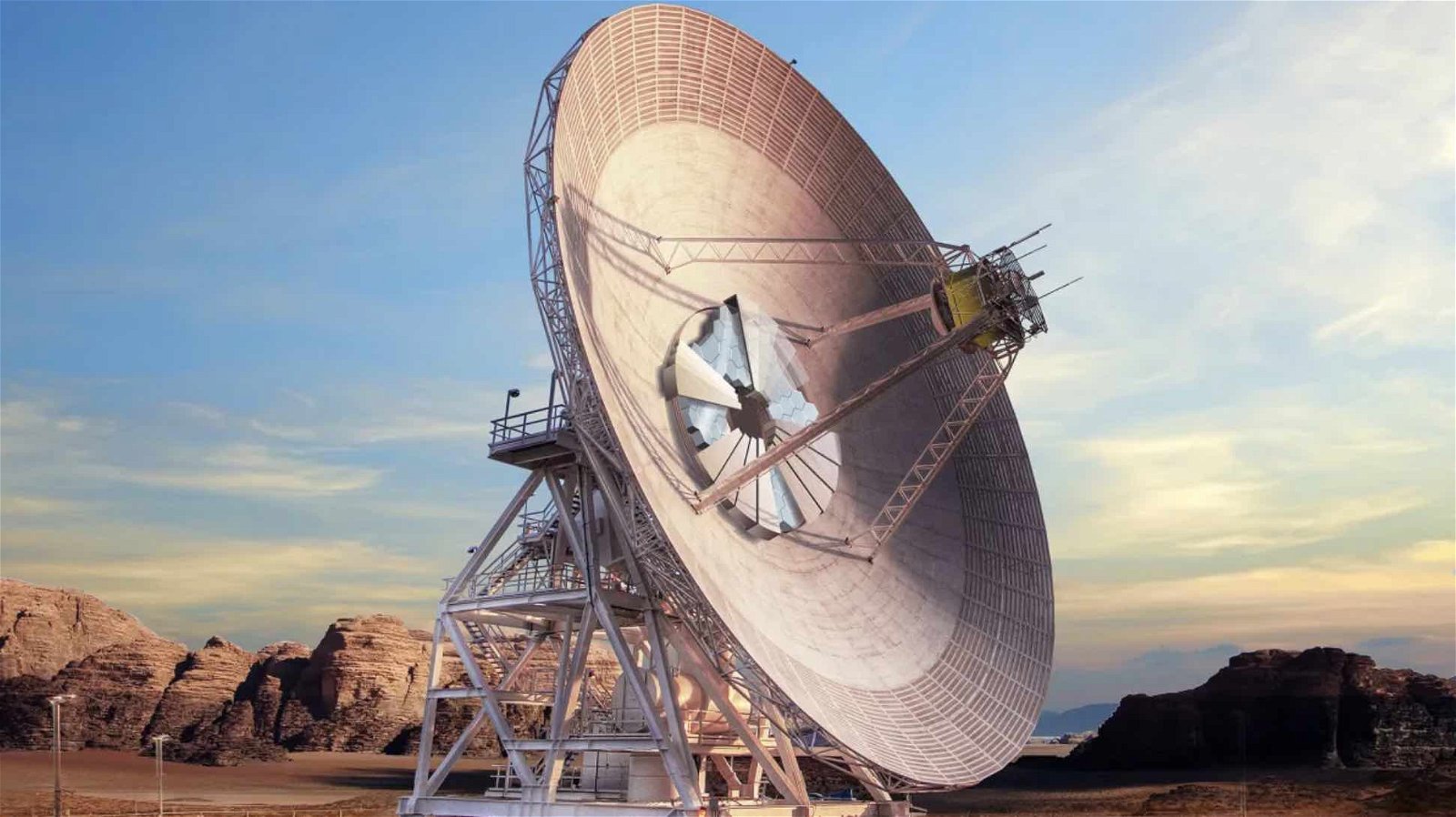NASA says recent tests with an experimental hybrid antenna were successfully able to receive radio frequency and near-infrared laser signals being dispatched from the Psyche spacecraft on its journey into deep space.
The space agency revealed last week that the technology demonstration showcases how large dish antennas currently used by NASA with its Deep Space Network (DSN) can be harnessed for future uses with optical communication that uses lasers.
Since November, Deep Space Station 13 at NASA’s Goldstone complex in California has been tracking the downlink laser originating from the Deep Space Optical Communications flight laser transceiver aboard Psyche.
An Experimental Hybrid Antenna
Deep Space Station 13 has been specially retrofitted with an optical terminal that allows it to receive both radio frequency and laser signals simultaneously. Such capabilities represent a significant asset that will allow portions of the Deep Space Network’s existing infrastructure to be utilized in new ways during future missions, as well as help to maximize the amount of information that can be transmitted in proportion to the growing reliance on the network for current space missions.


Currently, the Deep Space Network has 14 dishes located at facilities in California and Madrid, as well as Canberra, Australia. By retrofitting these antennas for use in collecting optical information like Deep Space Station 13, NASA may be able to significantly increase the amount of data that can be collected by dividing transmissions between optical and radio methods.
Amy Smith, DSN deputy manager at NASA’s Jet Propulsion Lab in Pasadena, California, said the hybrid antenna was successful in locking onto the download link shortly after the tech demonstration.
“It also received Psyche’s radio frequency signal, so we have demonstrated synchronous radio and optical frequency deep space communications for the first time,” Smith said in a statement.
NASA recently revealed that the hybrid unit successfully downlinked data from 20 million miles away at an impressive rate of 15.63 megabits per second, which is close to 40 times faster than what is capable using radio communications across that distance.
Capturing the Light
A key component of the new hybrid antenna is an array of segmented mirrors fitted within its dish, which replicate the light-collecting capabilities of a telescope with a one-meter aperture. This is significant since it allows photons from the laser that strike the mirrors to be redirected to a high-exposure camera on the antenna’s subreflector, which is collected by a camera and then carried through an optical fiber to a single photon detector.


“We use a system of mirrors, precise sensors, and cameras to actively align and direct laser from deep space into a fiber reaching the detector,” said Barzia Tehrani, communications ground systems deputy manager and delivery manager for the hybrid antenna at JPL, in a recent statement.
The technology will likely be used to detect laser signals sent from Mars when it reaches its furthest distance from Earth, the same distance psyche will be later this summer as it approaches the main asteroid belt between Mars and Jupiter in search of asteroids that may be rich in metals and other resources.
The implementation of hybrid antennas will facilitate enhanced data-rate communications that will play a crucial role during future crewed missions to Mars.
Eventually, NASA plans to build a similar mirror reflector consisting of 64 segments, which will mimic the capabilities of a 26-foot aperture telescope.
“We can have one asset doing two things at the same time; converting our communication roads into highways and saving time, money, and resources,” Tehrani said in a statement.
Micah Hanks is the Editor-in-Chief and Co-Founder of The Debrief. He can be reached by email at micah@thedebrief.org. Follow his work at micahhanks.com and on X: @MicahHanks.

